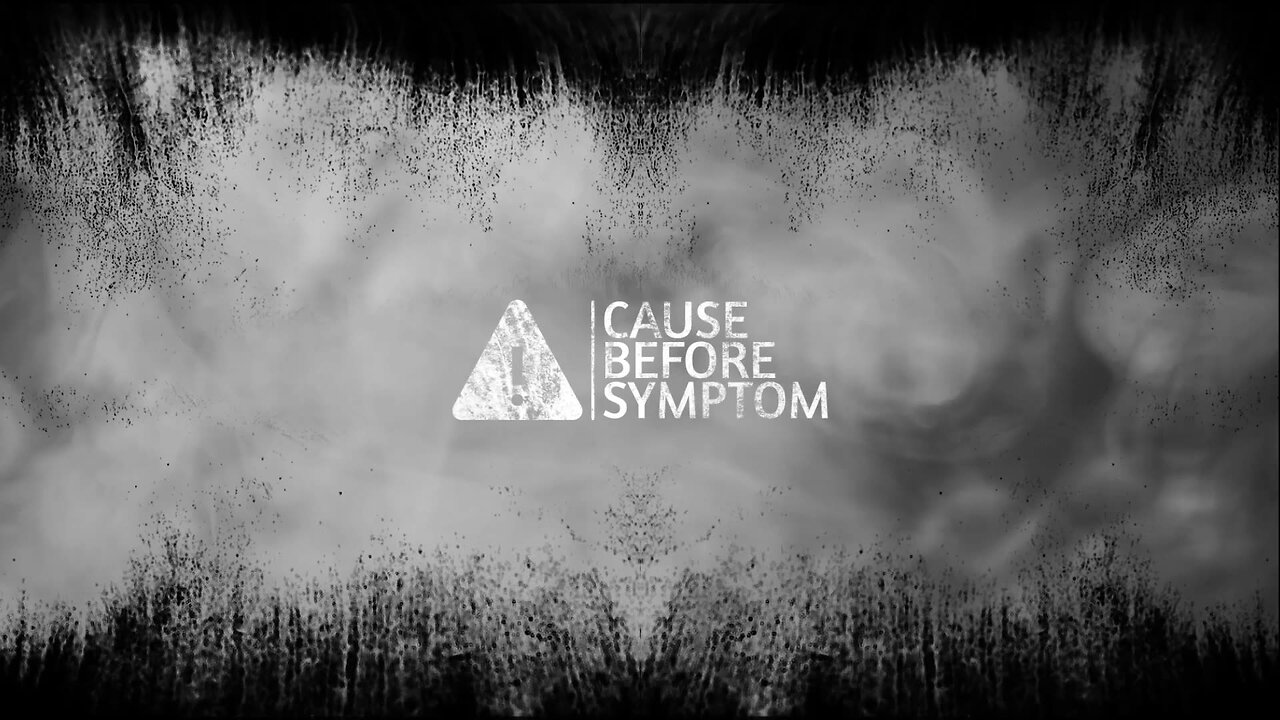Premium Only Content

Fluorescent Nanoparticles In Coke & Pepsi + My Testimony
Cause Before Symptom - With Your Host James Carner
Fluorescent Nanoparticles In Coke & Pepsi + My Testimony
A 2017 study found that fluorescent nanoparticles (NPs) are present in Coca-Cola, and that these NPs have the following properties:
* Size: Around 5 nanometers in size
* Composition: Contain hydrogen, carbon, and oxygen
* Behavior: Can be taken up by living cells, accumulate in the cell membrane and cytoplasm, and easily accumulate in the digestive tract
* Other: Can cross the blood-brain barrier and disperse in the brain, and undergo significant fluorescence quenching in vitro digestion
However, beverage manufacturers are not required to disclose their use of nanomaterials, which some say creates a "chasm of knowledge" for the public and regulators.
Nanotechnology can also be used to improve food quality, extend shelf life, reduce costs, and enhance nutrition. For example, nanomaterials used in food packaging can improve mechanical barriers, detect microbial contamination, and potentially increase the bioavailability of nutrients
Nanoparticles, such as carbon quantum dots (CQDs), are naturally produced during the manufacturing of many foods, including Coca-Cola. Nanotechnology is also used in the beverage industry for other purposes, such as water treatment and purification, and nanoemulsions in soft drinks, juices, and dairy products.
Fluorescent Nanoparticles in Coke: A Surprising Discovery
Recent research has discovered the presence of fluorescent nanoparticles (NPs) in Coca-Cola and Pepsi. These tiny particles, about 5 nanometers in size, are composed of hydrogen, carbon, and oxygen.
1. Fluorescent nanoparticles present in Coca-Cola and Pepsi-Cola: physiochemical properties, cytotoxicity, biodistribution and digestion studies - PubMed
pubmed.ncbi.nlm.nih.gov
2. Fluorescent nanoparticles present in Coca-Cola and Pepsi-Cola: physiochemical properties, cytotoxicity, biodistribution and digestion studies | Request PDF - ResearchGate
How did they get there?
Scientists believe these nanoparticles are unintentionally formed during the manufacturing process. The exact mechanism is still under investigation.
1. Full article: Fluorescent nanoparticles present in Coca-Cola and Pepsi-Cola: physiochemical properties, cytotoxicity, biodistribution and digestion studies - Taylor & Francis Online
What do we know about them?
* Fluorescence: They emit light when exposed to ultraviolet light.
* Biodistribution: They can be absorbed by living cells and accumulate in various tissues, including the brain.
* Toxicity: While initial studies suggest low toxicity, more research is needed to fully understand their long-term effects.
Why is this a concern?
The presence of nanoparticles in food is a relatively new area of study. There are concerns about their potential impact on human health, as their small size allows them to penetrate cells and tissues.
1. Should you be worried about nanotoxicity? - HORIBA
www.horiba.com
It's important to note that this is an ongoing area of research. While the discovery is intriguing, more studies are necessary to determine the exact nature of these nanoparticles and their potential health implications.
The Coca-Cola Company and Microsoft announce five-year strategic partnership to accelerate cloud and generative AI initiatives
PepsiCo partners with Microsoft for new era of operational agility and product innovation amid rising consumer demand
The articles say both companies are using Microsoft’s cloud computing for data purposes. However fluorescent nano particles have been found in the soft drinks and researchers don’t know why.
Foodborne nanoparticles (NPs) have drawn great attention due to human health concerns. This study reports the detection of the presence of fluorescent NPs, about 5 nm, in two of the most popular beverages, Coca-Cola (Coke) and Pepsi-Cola (Pepsi). The NPs contain H, C and O, three elements with a tunable emission and with a quantum yield of 3.3 and 4.3% for Coke and Pepsi, respectively. The presence of sp³-hybridized carbon atoms of alcohols and ethers bonds was confirmed by NMR analysis. The NPs can be taken up by living cells and accumulate within cell membrane and cytoplasm. Evaluation of the acute toxicity of the NPs revealed that the BALB/c mice appeared healthy after administration of a single dose of 2 g kg⁻¹ body weight. Analysis of glutamate pyruvate transaminase (GPT), glutamic oxaloacetic transaminase (GOT), urea and creatinine showed that there were statistically, but not biologically, significant differences in some of these biochemical parameters between the test and control groups. No obvious organ damage or apparent histopathological abnormality was observed in the tested mice. The biodistribution study in major organs indicated that the NPs were easily accumulated in the digestive tract, and they were able to cross the blood–brain barrier and dispersed in the brain. In vitro digestion of the NPs showed a significant fluorescence quenching of the NPs. This work represents the first report of foodborne fluorescent NPs present in Coke and Pepsi, and provides valuable insights into physicochemical properties of these NPs and their toxicity characteristics both in vitro and in vivo.
it is used as fluorescent probes in optical bioimaging. Fluorescent probes are molecules that absorb light of a specific wavelength and emit light of a different, typically longer, wavelength (a process known as fluorescence), and are used to study biological samples.
According to the NIH website Fluorescent probes, which allow visualization of cations such as Ca2+, Zn2+ etc., small biomolecules such as nitric oxide (NO) or enzyme activities in living cells by means of fluorescence microscopy, have become indispensable tools for clarifying functions in biological systems. This review deals with the general principles for the design of bioimaging fluorescent probes by modulating the fluorescence properties of fluorophores, employing mechanisms such as acceptor-excited Photoinduced electron Transfer (a-PeT), donor-excited Photoinduced electron Transfer (d-PeT), and spirocyclization, which have been established by our group. The a-PeT and d-PeT mechanisms are widely applicable for the design of bioimaging probes based on many fluorophores and the spirocyclization process is also expected to be useful as a fluorescence off/on switching mechanism. Fluorescence modulation mechanisms are essential for the rational design of novel fluorescence probes for target molecules. Based on these mechanisms, we have developed more than fifty bioimaging probes, of which fourteen are commercially available. The review also describes some applications of the probes developed by our group to in vitroand in vivo systems.
Food additive nanoparticles could negatively affect your gut health
The literature indicates that, in addition to evoking immune dysfunctions in the gut, inorganic NPs exhibit a moderate to extensive impact on intestinal microbiota composition and activity, highlighting a recurrent signature that favours colonization of the intestine by pathobionts at the expense of beneficial bacterial strains, as observed in IBD, CRC and obesity. Considering the long-term exposure via food, the effects of NPs on the gut microbiome should be considered in human health risk assessment, especially when a nanomaterial exhibits antimicrobial properties.
So why does coke and Pepsi have these ingredients? Their lie is they just appear through the creation process but studies are saying it hurts our health. Just simple research says to avoid Pepsi and coke products altogether but the masses will not do that research. But what is the real agenda behind the fluorescent lights?
Fluorescent probes are molecules that are used to study biological samples by absorbing light of a specific wavelength and emitting light of a different wavelength. This process is called fluorescence. Thermo Fisher Wcientific says its detect protein location and activation, identify protein complex formation and conformational changes and monitor biological processes in vivo. Science direct says they are molecules that react specifically with biological molecules to induce a concomitant change of their photochemical properties. This research is cutting edge and it has the ability to monitor biological processes. By ingesting the soft drinks, somehow coke and Pepsi have the ability to do real time imaging of you to detect and report information about you. The NPs contain H, C and O, three elements with a tunable emission and with a quantum yield of 3.3 and 4.3% for Coke and Pepsi, respectively.
High-Performance Liquid Chromatography (HPLC) is an analytical technique that can be used to monitor soft drinks before they are carbonated and packaged. It can quickly measure the levels of caffeine, sweeteners, and preservatives in a diluted syrup to ensure it meets specifications. HPLC can also be used to separate and quantify other ingredients in soft drinks, such as:
* Additives: Including amaranth, quinoline yellow, quinine sulfate, sunset yellow, aspartame, saccharin, vanillin, sorbic acid, and benzoic acid
* Benzodiazepines: Such as chlordiazepoxide, diazepam, clonazepam, midazolam, flurazpam, and lorazepam, which can be used to screen for adulterated non-alcoholic drinks
* Potassium sorbate, sodium benzoate, carmoisine, allura red, and ponceau 4R: To optimize HPLC conditions for their simultaneous determination
So, the luminescence nano particles are added through High-Performance Liquid Chromatography or HPLC to determine the quality of the beverage before they add carbonation and bottle it. This is how the nano particles are entering the soda. The agreements between coke, Pepsi and Microsoft are just for cloud computing and nothing else. Microsoft and soft drink companies are not monitoring our bodies through nano tech and WiFi. At least, I can’t find anything that makes common sense ingesting the fluorescent particles for data gathering or for any nefarious purposes. It’s what is left over from a process that is actually harmful for the gut. As I reported above, these particles attack the gut health just like petroleum does.
My Testimony
Sources
Gemini AI
The Coca-Cola Company and Microsoft announce five-year strategic partnership to accelerate cloud and generative AI initiatives - Stories
PepsiCo partners with Microsoft for new era of operational agility and product innovation amid rising consumer demand - Stories
Fluorescent nanoparticles present in Coca-Cola and Pepsi-Cola: physiochemical properties, cytotoxicity, biodistribution and digestion studies | Request PDF
Toward quantitatively fluorescent carbon-based “quantum” dots, Nanoscale | 10.1039/c0nr00962h | DeepDyve
Development of fluorescent probes for bioimaging applications - PMC
Impacts of foodborne inorganic nanoparticles on the gut microbiota-immune axis: potential consequences for host health | Particle and Fibre Toxicology | Full Text
Food additive nanoparticles could negatively affect your gut health | Binghamton News
Fluorescent probes for bioimaging applications - ScienceDirect
-
 LIVE
LIVE
The Original Next Level Gaming
10 hours agoNLG Thursday Night at the Arcade!
1,625 watching -
 3:36:23
3:36:23
Llama Noises
6 hours ago $1.06 earnedKicking Names and Taking Ass: Marvel Rivals
18.7K -
 1:08:32
1:08:32
The Charlie Kirk Show
4 hours agoTHOUGHTCRIME Ep. 72 — Self-Sterilizing Libs? 2032 Armageddon? Worst Super Bowl Ever?
81.1K31 -
 1:14:02
1:14:02
Donald Trump Jr.
10 hours agoThe USAID Truman Show, Interview with Mike Benz | Triggered Ep.214
138K199 -
 1:37:34
1:37:34
Precision Rifle Network
1 day agoS4E4 Guns & Grub - You Can't Handle The Truth!
16.1K -
 56:14
56:14
Flyover Conservatives
23 hours agoSick, Tired, & Foggy? The TRUTH About What’s Living in Your Gut! - Dr. Jason Dean | FOC Show
50.5K5 -
 34:24
34:24
Kimberly Guilfoyle
10 hours agoFaith, Fairness, and a Better Future: Live w/ Joy Pullmann & Elizabeth Mitchell | Ep.194
147K31 -
 1:12:20
1:12:20
Josh Pate's College Football Show
8 hours ago $3.35 earnedBig CFB Changes Coming | DeBoer Fixing Alabama | Signing Day Reaction | OhioSt vs Michigan Shift
55.9K2 -
 59:39
59:39
The StoneZONE with Roger Stone
5 hours agoEXCLUSIVE: James O'Keefe Talks to Roger Stone About Dropped Charges Against Him | The StoneZONE
44.8K3 -
 1:48:10
1:48:10
megimu32
5 hours agoON THE SUBJECT: Comedian LOSES It At Heckler!
28.1K4